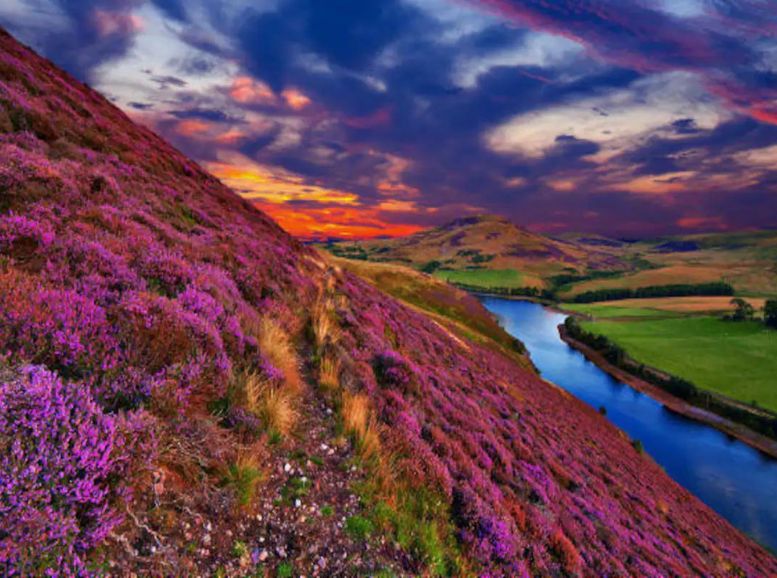Tucked away in the heart of the Himalayas lies a breathtaking sanctuary – the Valley of Flowers National Park. Steeped in legend and teeming with natural wonders, this valley is a dazzling tapestry of vibrant colors and diverse life. Each year, it beckons adventurers, nature lovers, and scientists alike, all captivated by its beauty and rich biodiversity.
In this blog, we embark on a captivating exploration of the Valley of Flowers National Park. We’ll delve into its mythical past, its ongoing conservation efforts, and the countless treasures hidden amongst its verdant meadows and snow-capped peaks.
how to reach:
- By Air: Jolly Grant Airport in Dehradun is the closest airport. From there, taxis or buses will take you to Joshimath or Govindghat, the starting points for treks to the valley.
- By Train: Rishikesh Railway Station is the nearest train station. Taxis or buses will connect you to Joshimath or Govindghat. Haridwar, another major station nearby, offers connections to various Indian cities.
- By Road: The final leg involves a road trip. Local taxis or shared jeeps take you from Joshimath or Govindghat to Ghangaria, the base camp for the valley.
- On Foot: Adventurous travelers can trek from Govindghat to Ghangaria, enjoying stunning mountain and forest views. Mules or helicopter services might be available during peak season for those who prefer not to walk the entire distance (around 13 kilometers).
suggested tome for visit:
- Peak Bloom (June to September): This is the prime season, offering pleasant weather (15-20°C) and a dazzling display of wildflowers. However, expect occasional showers and potential crowds.
- Monsoon Magic (July to August): Witness the valley at its most vibrant with lush greenery and abundant flowers. Be prepared for heavy rain, potential landslides, and road closures that can make trekking challenging.
- Tranquil Autumn (September to October): As the flowers start to fade, the crowds thin and the skies clear, offering spectacular views of the surrounding peaks. The weather remains comfortable for trekking.
must-see places:
Unveiling the Mystique:
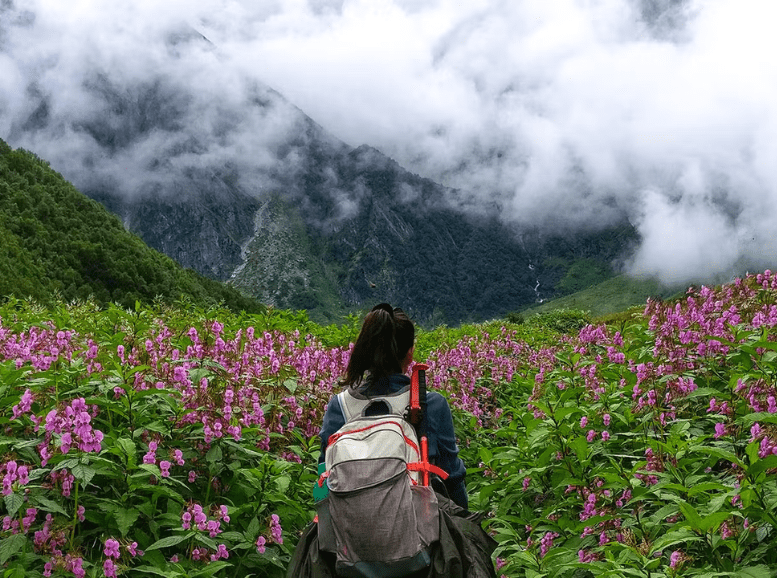
Local folklore refers to the Valley of Flowers as Bhyundar Valley. While some accounts credit British mountaineer Frank Smythe with “discovering” it in 1931 during his Mount Kamet expedition, the valley’s existence likely predates this encounter. Regardless of its formal introduction to the wider world, the Valley of Flowers has undeniably captivated travelers for generations with its breathtaking beauty and diverse ecosystem.
A Botanical Wonderland: Valley of Flowers
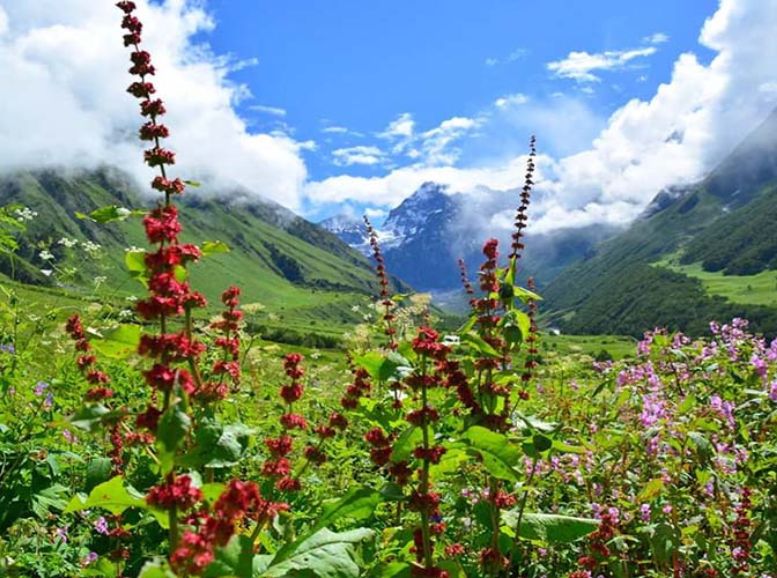
The Valley of Flowers stuns visitors with its unparalleled diversity of alpine plants. Over 600 species of wildflowers carpet the meadows, including many rare and endangered varieties. Vibrant blue Himalayan poppies intermingle with delicate Brahma Kamals, creating a mesmerizing tapestry of color. Each winding trail unfolds a kaleidoscope of botanical wonders, more enchanting than the next.
Trekking Through Paradise:
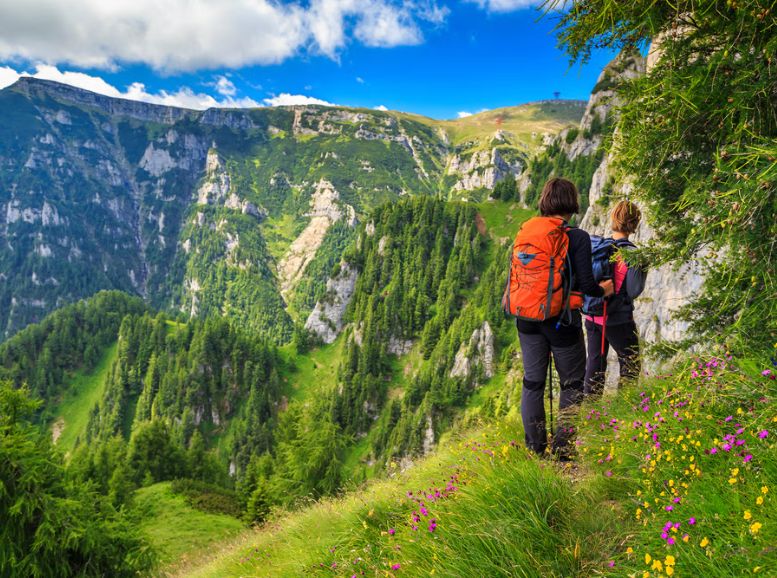
The trek to the Valley of Flowers is an adventure in itself, offering stunning scenery that rivals the beauty of the destination. The journey begins in the lively town of Joshimath. From there, hikers embark on a scenic ascent through charming villages and lush forests. As you gain elevation, panoramic views unfold, revealing snow-capped peaks, cascading waterfalls, and meandering streams. This breathtaking path provides ample opportunities to capture the beauty on camera and enjoy moments of peaceful reflection.
Preserving Nature’s Legacy:
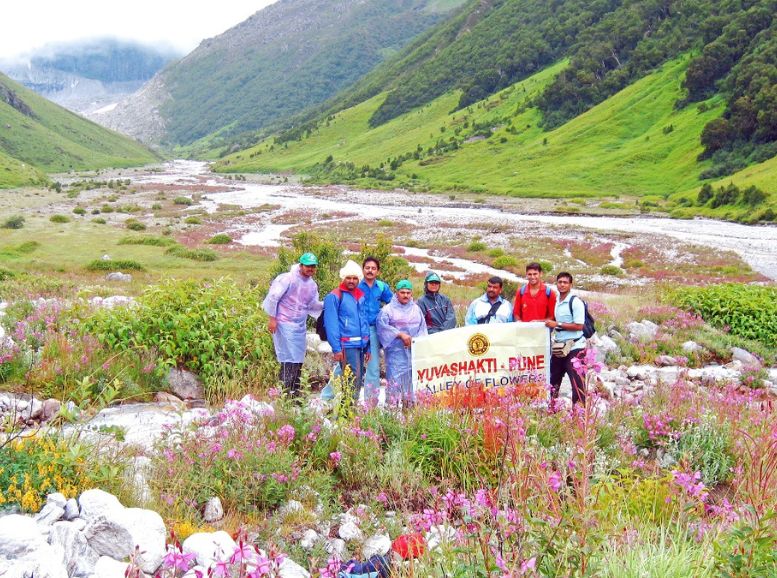
While the Valley of Flowers enchants visitors with its natural splendor, it’s also a vital sanctuary for a diverse array of plant and animal life. Recognizing this ecological significance, the Indian government established the Valley of Flowers National Park in 1982. This designation aims to conserve the valley’s pristine beauty and ensure its continued wonder for generations to come. Today, ongoing efforts promote sustainable tourism practices to protect the delicate balance of flora and fauna that thrives within the park’s borders.
local experiences:
- Meeting the Guardians:
- Connect with knowledgeable guides and porters who act as custodians of the valley’s natural treasures.
- Gain insight into the vital role played by indigenous communities in conserving the region’s biodiversity.
- Learn about the ecological significance and cultural heritage through engaging conversations and shared experiences.
- Festivals and Cultural Traditions:
- Delve into the vibrant tapestry of local festivals and cultural festivities.
- Witness the colorful dances and rituals of events like the Nanda Devi Raj Jat Yatra.
- Experience the spiritual resonance of pilgrimages such as the Hemkund Sahib yatra, steeped in tradition and reverence.
- Supporting Sustainable Tourism:
- Contribute to responsible tourism initiatives that empower and benefit local communities.
- Opt for eco-conscious accommodations and ethical tour operators committed to minimizing environmental impact.
- Patronize community-based enterprises promoting cultural preservation and environmental stewardship.
- Cultural Exchanges and Workshops:
- Engage in cultural exchanges with locals, fostering mutual understanding and appreciation.
- Participate in hands-on workshops showcasing traditional crafts, music, and culinary delights.
- Forge meaningful connections with the vibrant people of the Valley of Flowers, enriching your journey with authentic experiences and lasting memories.
travel tips:
- Be Prepared: Research accommodation and transportation options well in advance, especially during peak season.
- Pack Smart: Layer your clothing for changing weather, wear sturdy hiking boots, and bring essentials like sunscreen, a hat, and a refillable water bottle. Pack high-energy snacks to keep you fueled.
- Hydrate and Acclimatize: Staying hydrated on the trek is crucial. Carry plenty of water and replenish regularly. Allow your body time to adjust to the high altitude by taking breaks during your trek.
- Tread Lightly: Stay on designated trails to minimize your impact on the fragile ecosystem. Avoid disturbing wildlife and leave no trace behind by properly disposing of waste.
- Responsible Photography: Capture the beauty of the valley with your camera, but be mindful of the environment. Avoid using flash near wildlife or damaging vegetation to get a better shot.
- Stay Informed: Check the weather forecast and trail conditions before you embark on your journey.
- Safety First: Always inform someone of your planned route and carry a first-aid kit with you.
Conclusion
A visit to Valley of Flowers National Park promises an unforgettable adventure, immersing you in the heart of the Himalayas’ breathtaking beauty. By following these tips, you can ensure a safe, enjoyable, and respectful experience. From planning and packing thoughtfully to respecting local customs and minimizing your impact, each step contributes to a memorable journey. You’ll not only experience the valley’s splendor but also become a responsible traveler, leaving a positive footprint on this remarkable region.
So, pack your sense of adventure, reverence for nature, and appreciation for local culture, and prepare to be captivated by the Valley of Flowers. Let its wonders leave an indelible mark on your soul. To craft the perfect itinerary and ensure a hassle-free experience, visit Xplro.com
faq
- What is the Valley of Flowers National Park?
- The Valley of Flowers National Park is a UNESCO World Heritage Site nestled in Uttarakhand, India. It’s renowned for its stunning alpine meadows, diverse flora, and breathtaking landscapes.
- When is the best time to visit the Valley of Flowers?
- The optimal time to explore the Valley of Flowers is during the summer months, typically from mid-June to mid-September, when the valley is adorned with a myriad of colorful flowers.
- How do I reach the Valley of Flowers?
- To reach the Valley of Flowers, you can travel by air to Dehradun Airport, followed by a road journey to Joshimath or Govindghat, and then a trek to the valley.
- Is a permit required to visit the Valley of Flowers?
- Yes, a permit is necessary to enter the Valley of Flowers National Park. Permits can be obtained from the Forest Department office in Joshimath or Govindghat.
- What is the trekking distance to the Valley of Flowers?
- The trekking distance from Govindghat to the Valley of Flowers is roughly 13 kilometers (8 miles) one way.
- Are there any accommodations available near the Valley of Flowers?
- Limited accommodations are offered in Govindghat and Ghangaria, including guesthouses and tents. It’s advisable to book in advance, particularly during peak seasons.
- What should I pack for a trek to the Valley of Flowers?
- Essential items to pack include warm clothing, rain gear, sunscreen, a hat, sturdy hiking shoes, water, snacks, and a first aid kit.
- Are there any medical facilities available in the area?
- Basic medical facilities are accessible in Ghangaria, including a small hospital and pharmacies. However, for serious medical emergencies, it may be necessary to travel to Joshimath or beyond.
- Can I visit the Valley of Flowers during the monsoon season?
- While the valley is open during the monsoon season, trekking conditions can be challenging due to heavy rainfall and landslides. It’s advisable to check weather forecasts and trekking conditions before planning a visit.
- What wildlife can be spotted in the Valley of Flowers?
- Visitors may encounter various wildlife species such as Himalayan black bears, musk deer, snow leopards (rarely seen), and a variety of bird species such as Himalayan Monal and Blue Sheep.
- Is photography allowed in the Valley of Flowers?
- Yes, photography is permitted in the Valley of Flowers. However, visitors are encouraged to be mindful of the environment and avoid causing damage to delicate flora while capturing photographs.
- What are some nearby attractions to visit along with the Valley of Flowers?
- Nearby attractions include Hemkund Sahib, a Sikh pilgrimage site, and Badrinath Temple, one of the Char Dham pilgrimage sites. Additionally, visitors can explore the scenic beauty of Auli and the serene surroundings of Joshimath.




